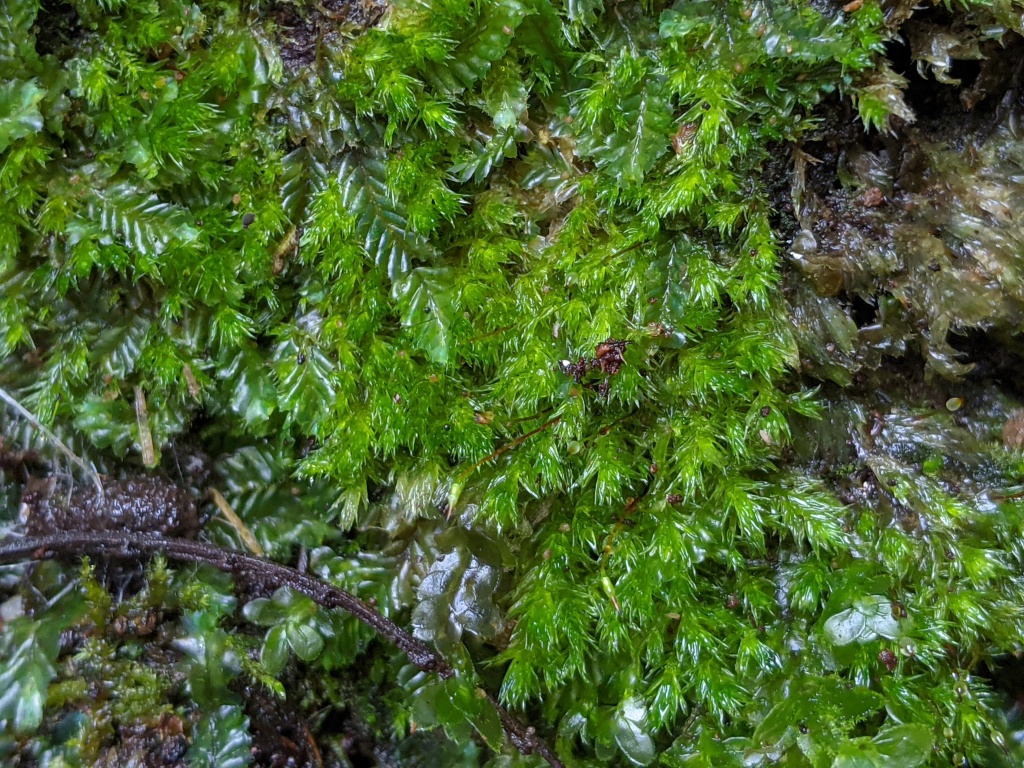Sauloma tenella
(Hook.f. & Wilson) Mitt.Asexual reproduction by fusiform gemmae borne on elongate filaments in leaf axils. Mats on soil, rocks, stumps and logs. Stems 4–35 mm long, sparsely branched, yellow or red-brown toward base, with sparse pale rhizoids restricted to stem base, central strand absent. Leaves erect when moist, erect to erect-patent when dry, often secund, narrowly triangle to ovate-triangular, 2–3.35 mm long, 0.52–0.75 mm wide, with a single fold at mid-leaf easily mistaken for costa, concave adaxially, constricted and appearing narrower and homomallous when dry; costa absent or very weak short and double; apex acuminate, without a hairpoint; margins entire, recurved near apex, without a border; laminal cells linear-rhomboidal to fusiform, 50–190 μm, 7–18 μm wide; laminal cells near base linear-rhomboidal to fusiform, 50–175 μm long, 12–33 μm wide, resembling alar cells. Setae (4–) 6–12 mm long, dark red, smooth. Capsule inclined to horizontal, ellipsoid to oblong, flaring at the mouth, 0.6–1 mm long, straight, brown. Operculum rostrate from conic base, 0.5–1 mm long.
GleP, VVP, GipP, OtP, WaP, CVU, GGr, EGL, EGU, HSF, HNF, OtR, MonT, HFE, VAlp. Widespread in moist sites among sclerophyll forest and in rainforest along and south of the Great Dividing Range Also WA, QLD, NSW and Tas. New Zealand, Argentina and Chile.
 Spinning
Spinning


